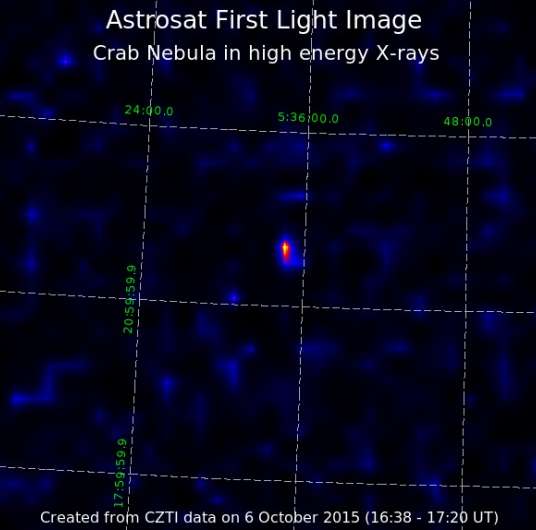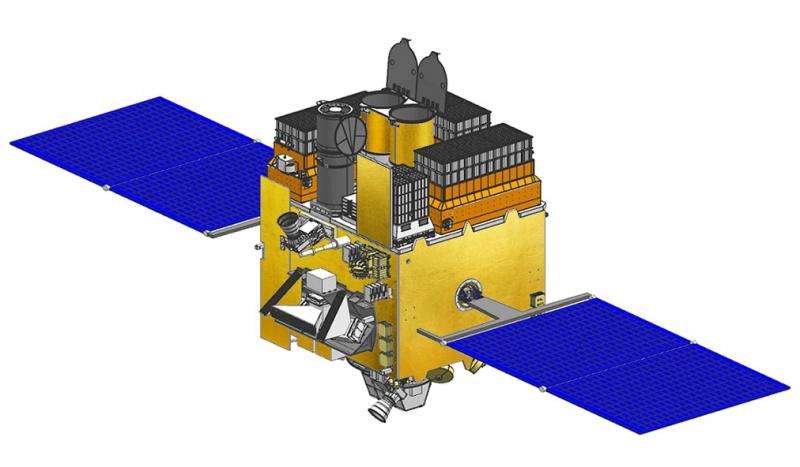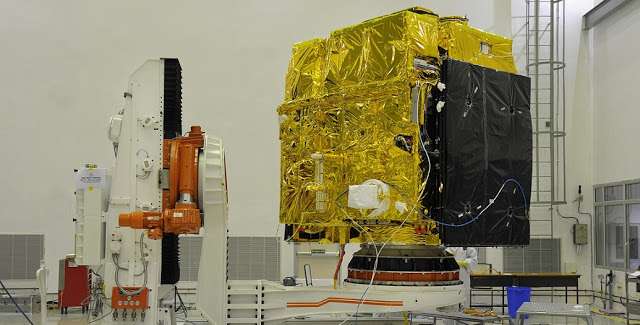India's first space observatory in good shape, performing science operations

India's Astrosat spacecraft, the country's first space observatory that was launched into orbit on Sept. 28, is in good shape and has already started performing science operations, according to a scientist involved in the mission. "It is in good shape and in stable communication with the ground stations in and near Bengaluru," K.P. Singh of the Tata Institute of Fundamental Research (TIFR) in Mumbai, India, told astrowatch.net.
The science data gathered by Astrosat are sent to the ground station at the Indian Space Research Organisation's (ISRO) Mission Operations Complex (MOX) in the city of Bengaluru. The data is then processed, archived and distributed by the Indian Space Science Data Centre (ISSDC) located at Byalalu, near Bengaluru.
Singh is responsible for the Soft-Xray Imaging Telescope (SXT) onboard Astrosat. He believes that this instrument will provide new insights into our understanding of the universe as SXT is designed for studying the X-ray spectrum, coming from distant celestial bodies. The telescope employs focusing optics and a deep depletion CCD camera at the focal plane to perform X-ray imaging in the 0.3–8.0 keV band.
"The simultaneous multi wavelength observations from visible to hard X-rays, combined with large X-ray bandwidth is expected to lead to new insights on the physics of matter being accreted around black holes, neutron stars and white dwarfs. The outflowing matter in the form of jets from supermassive black holes is believed to be present in the centers of very active galaxies, and the magnetic field of neutrons stars," Singh revealed.

Astrosat is India's first dedicated multi wavelength space observatory. The spacecraft is designed to observe the universe in the visible, ultraviolet (UV), low and high energy X-ray regions of the electromagnetic spectrum simultaneously with the help of its six payloads: SXT, Ultraviolet Imaging Telescope (UVIT), Large Area X-ray Proportional Counter (LAXPC), Cadmium Zinc Telluride Imager (CZTI) Scanning Sky Monitor (SSM) and Charged Particle Monitor (CPM).
According to ISRO, all scientific instruments are working fine, science operations are carried out regularly and the spacecraft's health is normal.
Astrosat, weighing about 1.5 tons, has been put into a targeted low Earth orbit (LEO) at an altitude of 404 miles (650 km) when it will continue its mission for five years. This orbit will enable observing supernova remnants, quasars, pulsars, galaxy clusters and active galactic nuclei at a number of different wavelengths simultaneously.
The Astrosat mission is a humongous effort of ISRO and all major astronomy institutions throughout the country, including TIFR, Inter University Centre for Astronomy and Astrophysics (IUCAA) of Pune, Indian Institute of Astrophysics (IIAP) and Raman Research Institute (RRI) of Bangaluru as well as some of the universities in India and two institutions from Canada and the UK. Thanks to the successful launch of Astrosat, India became the fourth country to have its own space observatory.

Singh hopes that the spacecraft would exceed expectations by offering even better images than the other space observatories could currently provide.
"The pictures in UV are expected be a little better than those obtained from NASA's GALEX [Galaxy Evolution Explorer], and will also have many more spectral bands in UV. In X-rays these are expected to be at best comparable to that of Suzaku [Japan's X-ray astronomy observatory] in soft X-rays, and [NASA's] Swift's BAT [Burst Alert Telescope] in hard X-rays," Singh said.
He also revealed that ISRO is planning another space observatories that would be developed together with the scientific community. The agency eyes smaller individual payloads that will be focused on a particular topic. Singh added that missions like Astrosat should drive the nation's space industry to achieve good quality and precision in manufacturing, and strengthen the bonds between industry and scientists.
Source: Astrowatch.net





















